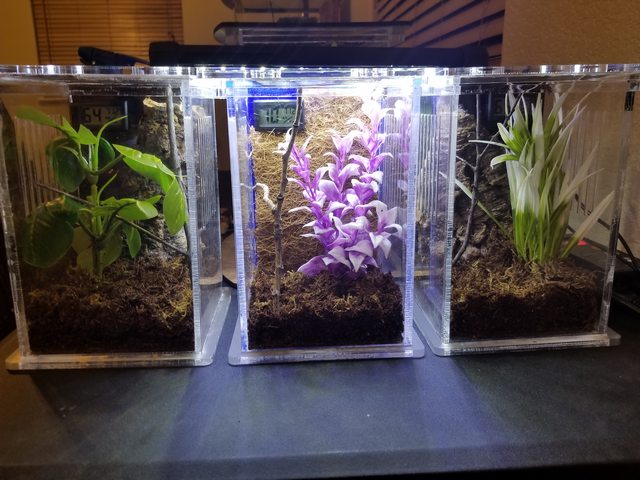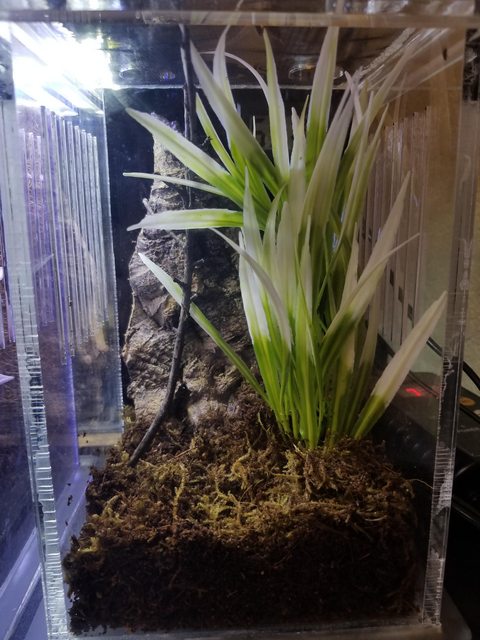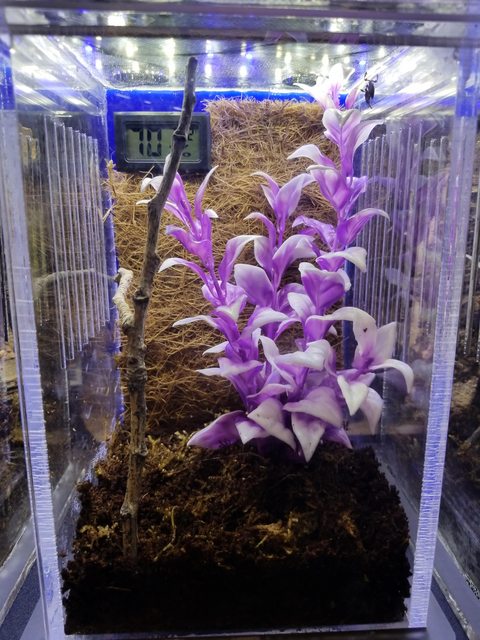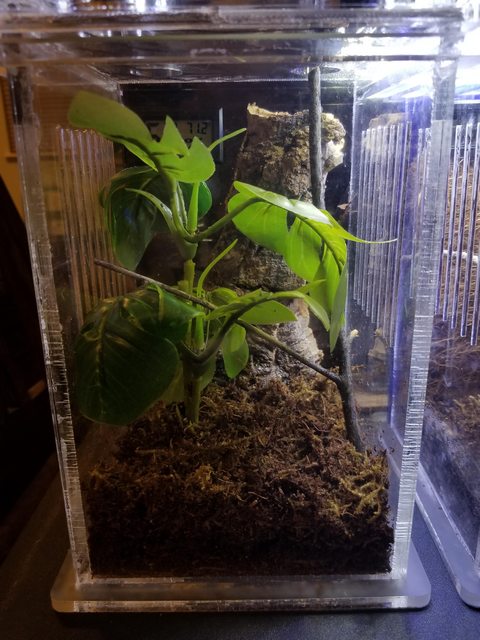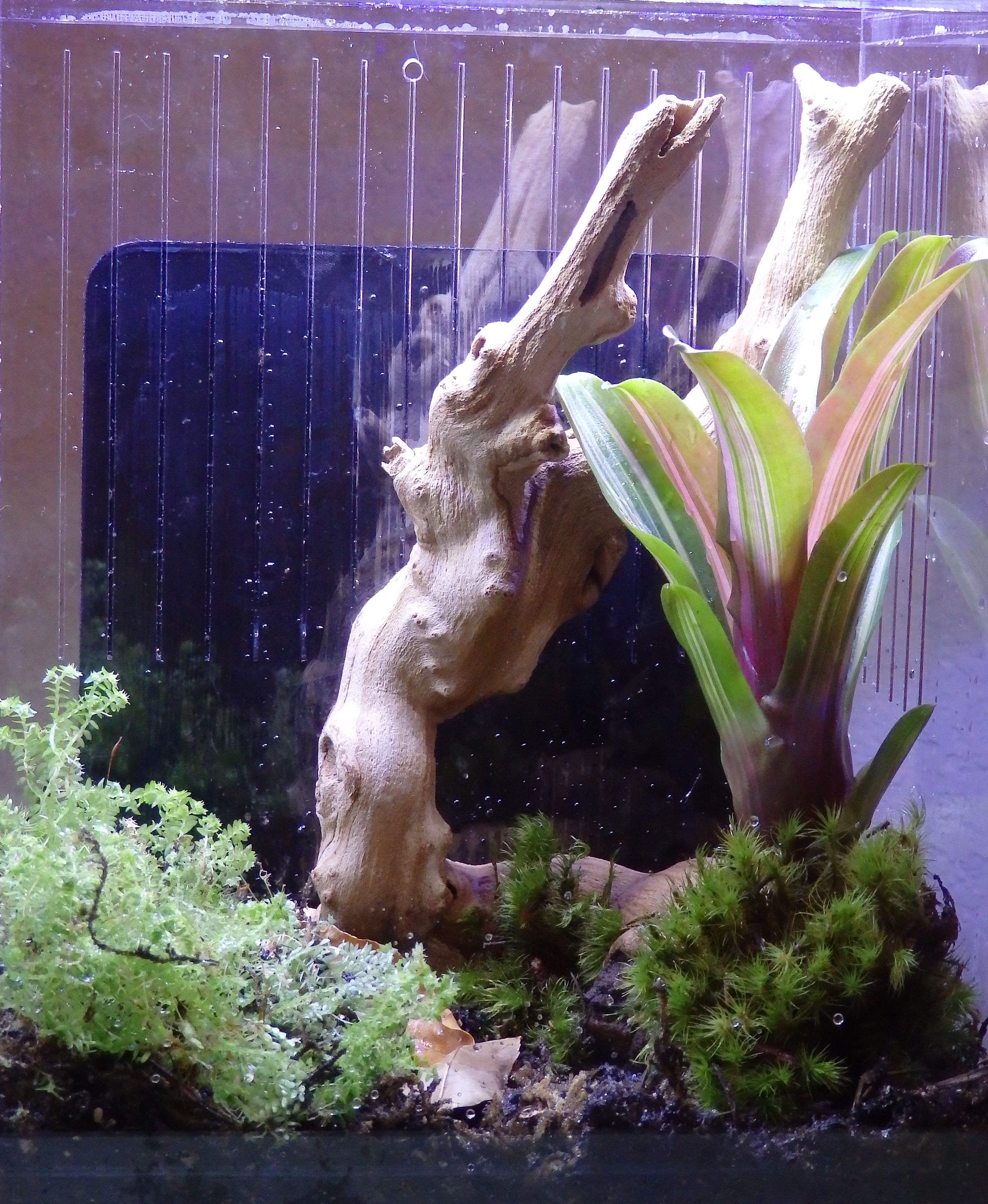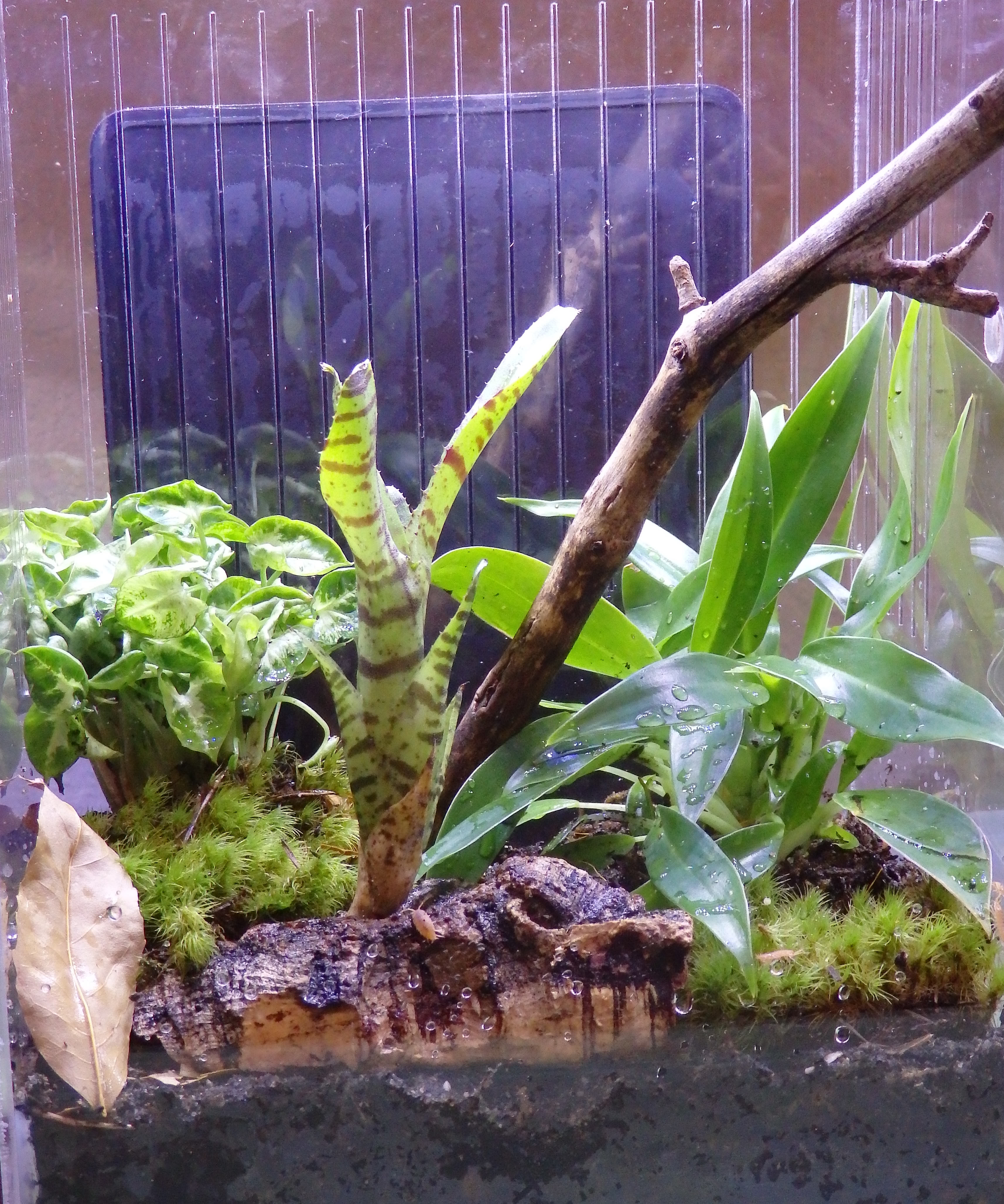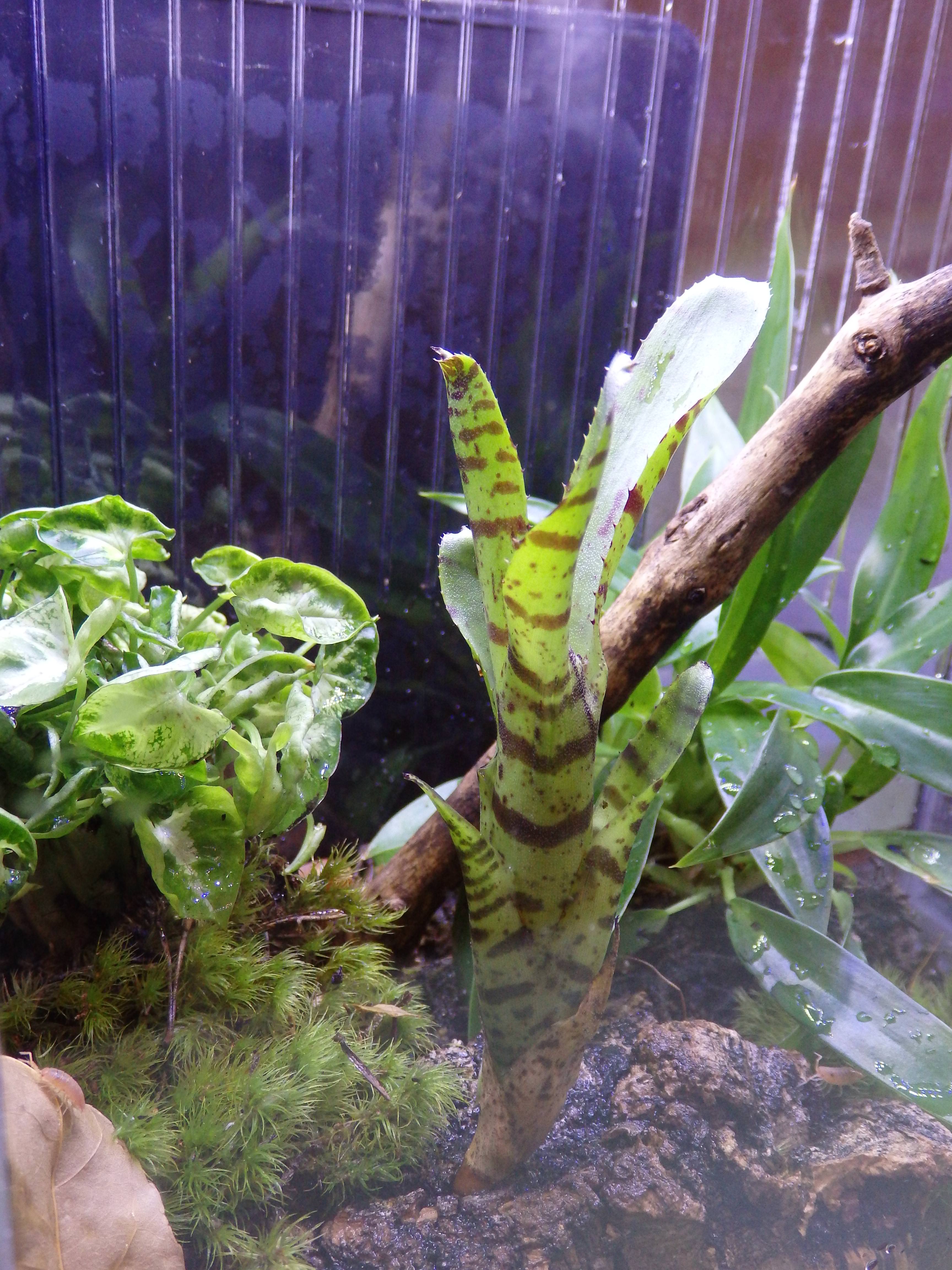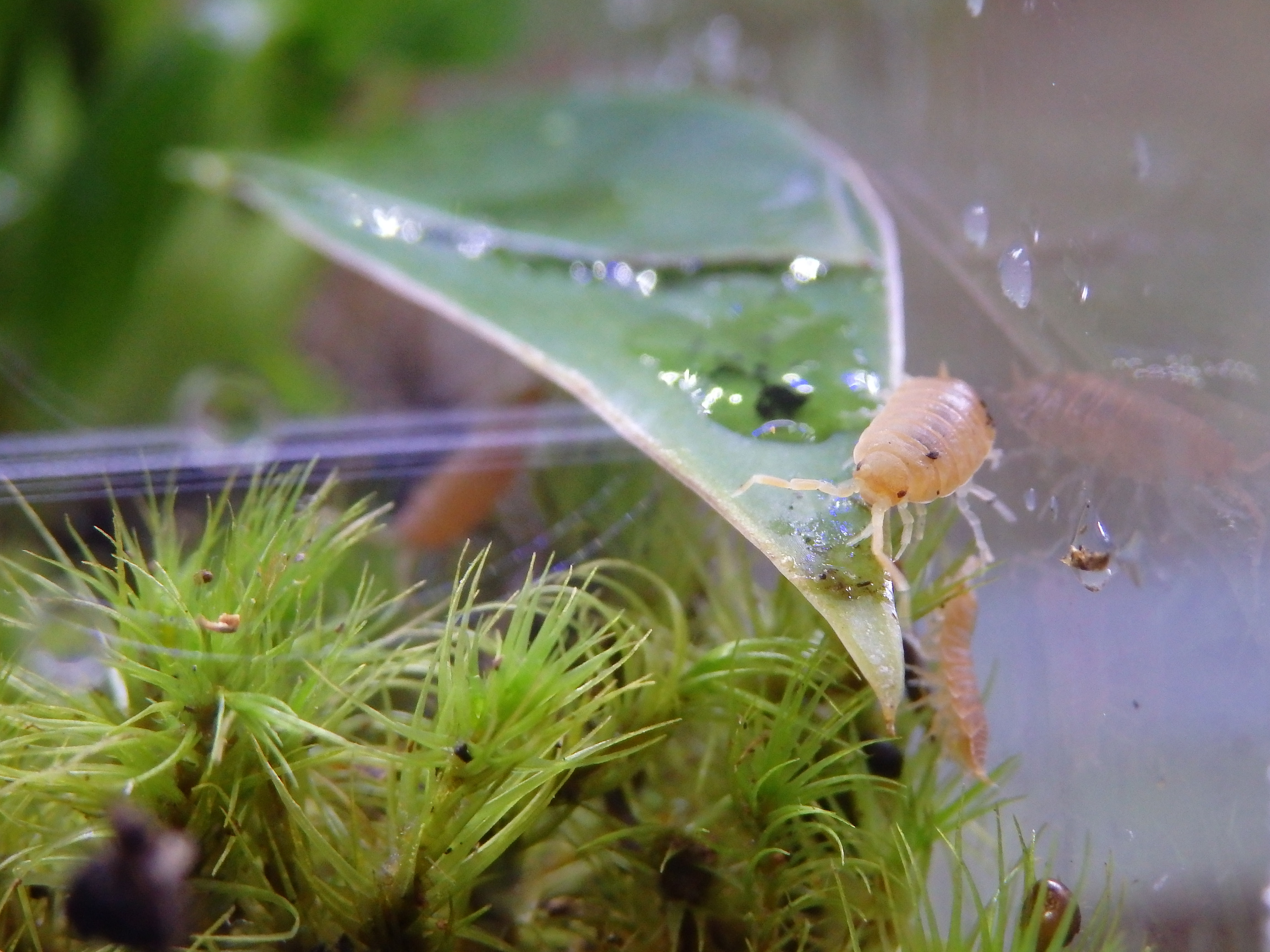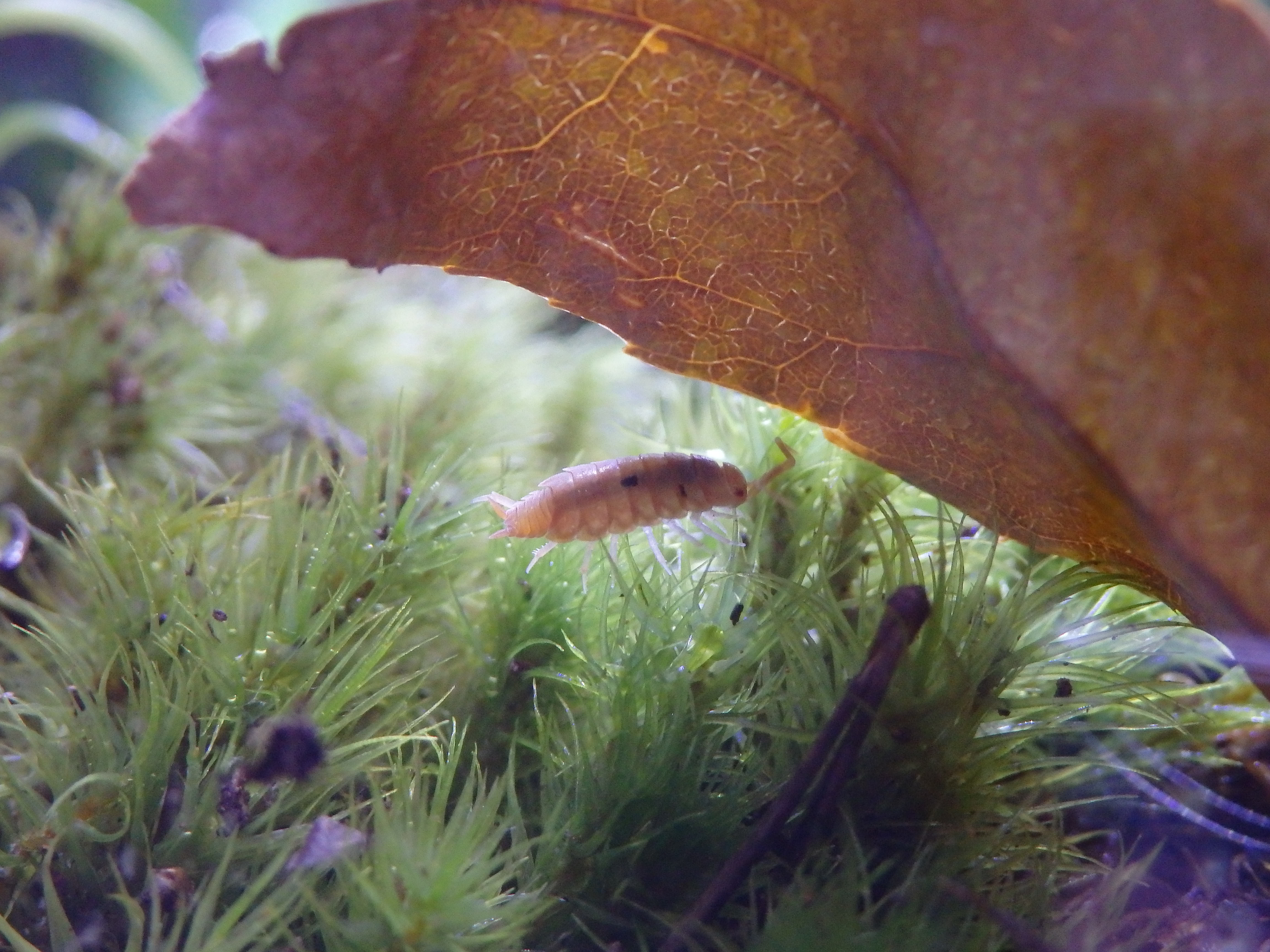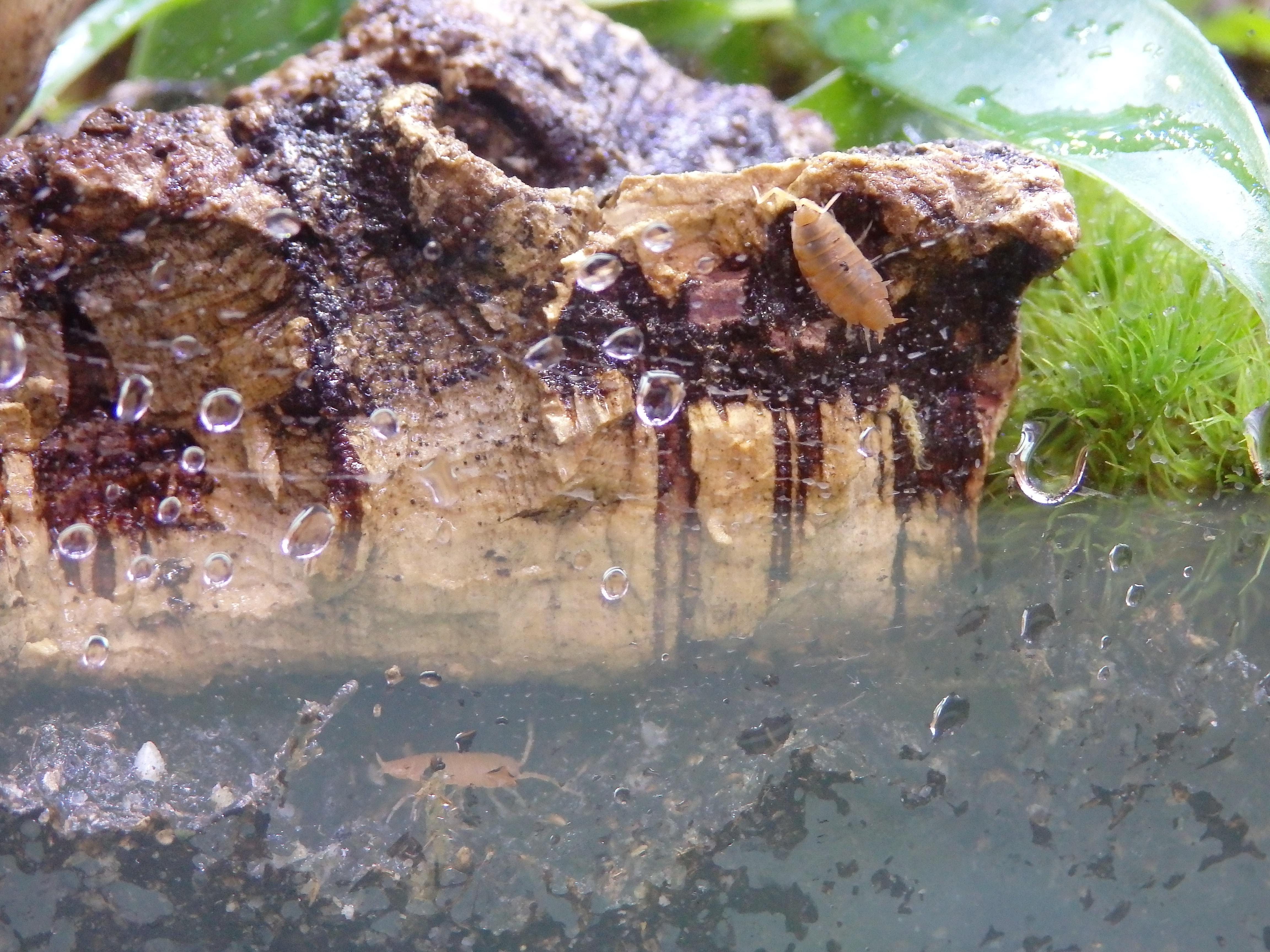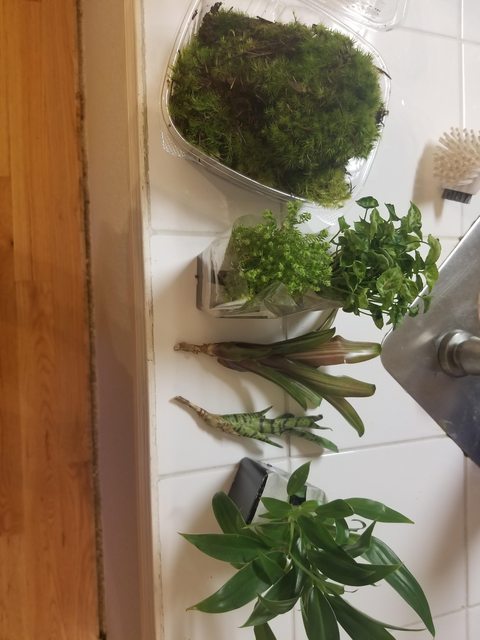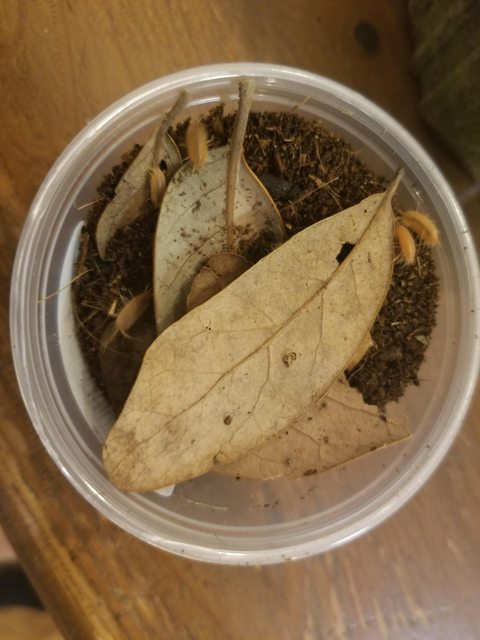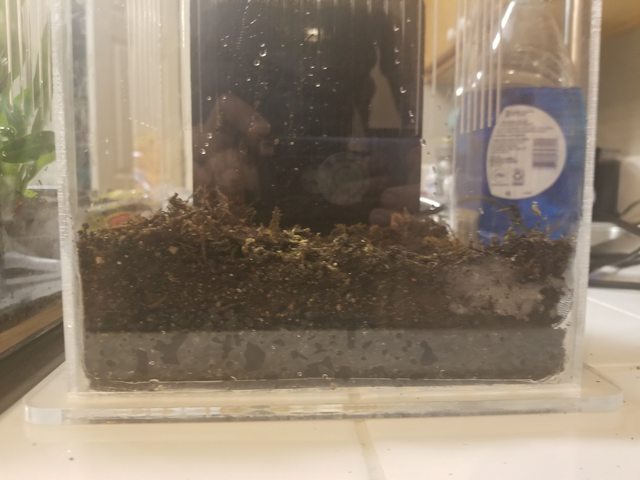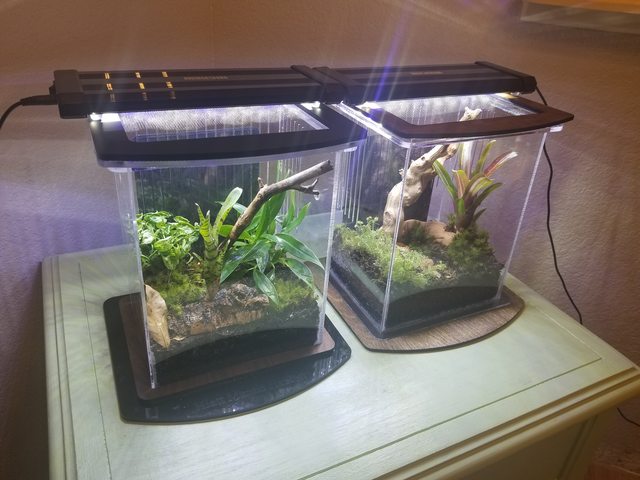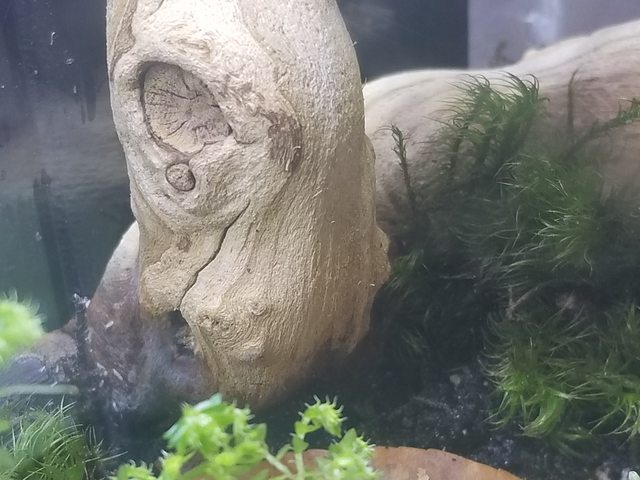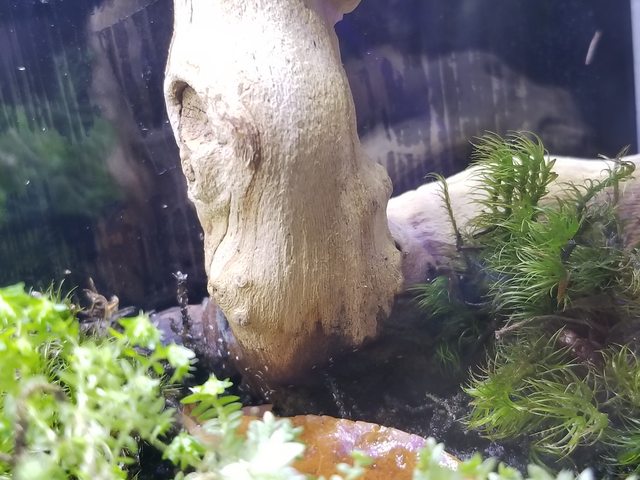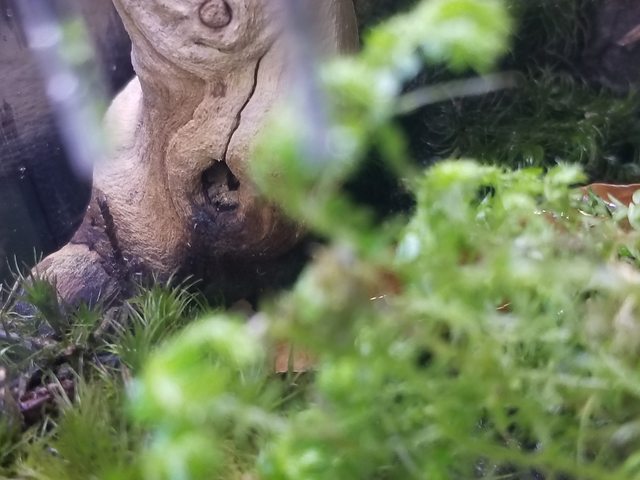I have posted about these setups in other threads but thought I would compile them into one place in case anyone can learn from our experience making small mantis vivariums.
We are using the NEHERP Vivarium Construction 101 as our guide: http://www.neherpetoculture.com/vivariumconstruction101
We will need to modify their requirements to make the smaller enclosures work. Their guide assumes a 10gallon tank or larger. The smaller enclosures pose a challenge since fluctuations in temperature or humidity can be a problem as can overcrowding. Budget is also a concern. It is nearly free to keep a ghost mantis in a deli cup with some paper towel and sticks, but a bioactive setup requires drainage, a larger enclosure, better substrate, the live plants, proper heat, and adequate methods to measure heat and humidity. We are trying to get this done for as cheap as possible. I would guess $100 each including the enclosure, electronics, microfauna, plants, etc. We also will not be allowing the vivarium to cycle 4-6 weeks like is recommended, because we are impatient.
Version 1.0
We started by building custom enclosures using the 3x height 2x width ratio that I see posted almost everywhere. The species that will go in the vivariums are giant rainforest (gets about 4") and peacock mantis (gets about 3.5") with those numbers in mind we built the enclosures. I had originally thought that the rainforest would only get 3.5" so I made the enclosures about 11" tall. We will have to move him out when he is full grown, but the vivarium will still be suitable for our ghosts.
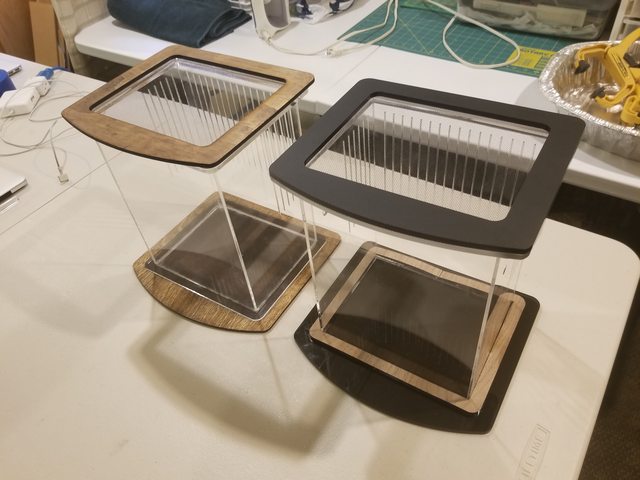
We made our first attempt at the vivarium using lucky bamboo and a vining plant. Gravel for the drainage layer, a mix of ZooMed Creature Soil and sphagnum moss for the substrate. Microfauna includes springtails and dwarf white isopods.
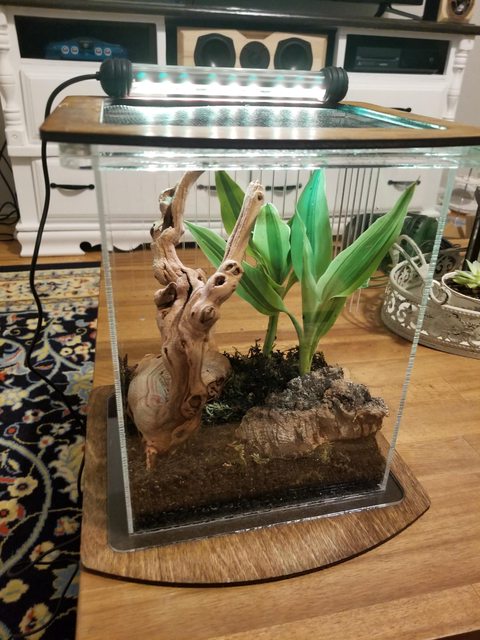
This setup has been fine for the last couple of weeks, but the light pictured is not sufficient for plant growth. The lucky bamboo started having problems until we switched to a more powerful light. As time went, we also found the NEHERP resource and realized we made a few other mistakes. That said, Carl, our giant rainforest mantis has enjoyed the variety and readily moves around the enclosure, top to bottom. He uses the wood and the bamboo to climb on and hangs out less on his lid, which I take as a good sign. We used a stick-on thermometer/hygrometer to keep our eye on those, and a stick-on heater for the back of the enclosure rather than trying to heat through the substrate. Heating through the substrate is not a great idea because it will not adequately heat the enclosure unless you use a lot of heat, in which case the humidity spikes. Heating on the back has been much better and allows him a nice temperature gradient to choose where he is comfortable.
Version 2.0
So, now knowing our mistakes, we are working on version 2.0. We took Carl out and put him in a larger enclosure while we do construction on his primary enclosure. We learned that you should keep some standing water in the drainage layer and that the mesh separating the drainage layer and soil should be large enough for springtails to pass through. In order to allow standing water, we needed to seal the enclosure better.
Our initial construction was almost watertight, but had a couple leaks. So we took out the substrate and plants etc, and cleaned out the enclosure. Then we used silicone to seal the bottom seams and 3" up the side seams, so you won't see the silicone above the substrate but it will be watertight in the places it is important.
We were also unhappy with the dwarf white isopods. Not in their performance, but in their visual appearance. They seem to clean well and reproduce quickly, but we can never seem to see them. Part of the enjoyment is seeing the bioactive processes at work. We can see the springtails in the drainage layer. We ordered several giant canyon isopods, which should also be suitable and much easier to see due to the larger size. We will still use the dwarf whites as well.
We were not happy with the luck bamboo or the little vine we got. The bamboo requires too much water and will grow too quickly. We ordered a variety of other plants from Josh'sFrogs to allow us to try out new types
The plants and isopods will be delivered tomorrow. We will need to use more substrate and drainage this time around since we didn't use enough last time. I am hopeful that we can get the setup balanced and healthy so we can enjoy the live plants, microfauna, and mantids in a more natural setup. This whole thing will be duplicated, one for Carl and one for our peacock mantis. They will have different plants for variety.
We are using the NEHERP Vivarium Construction 101 as our guide: http://www.neherpetoculture.com/vivariumconstruction101
We will need to modify their requirements to make the smaller enclosures work. Their guide assumes a 10gallon tank or larger. The smaller enclosures pose a challenge since fluctuations in temperature or humidity can be a problem as can overcrowding. Budget is also a concern. It is nearly free to keep a ghost mantis in a deli cup with some paper towel and sticks, but a bioactive setup requires drainage, a larger enclosure, better substrate, the live plants, proper heat, and adequate methods to measure heat and humidity. We are trying to get this done for as cheap as possible. I would guess $100 each including the enclosure, electronics, microfauna, plants, etc. We also will not be allowing the vivarium to cycle 4-6 weeks like is recommended, because we are impatient.
Version 1.0
We started by building custom enclosures using the 3x height 2x width ratio that I see posted almost everywhere. The species that will go in the vivariums are giant rainforest (gets about 4") and peacock mantis (gets about 3.5") with those numbers in mind we built the enclosures. I had originally thought that the rainforest would only get 3.5" so I made the enclosures about 11" tall. We will have to move him out when he is full grown, but the vivarium will still be suitable for our ghosts.

We made our first attempt at the vivarium using lucky bamboo and a vining plant. Gravel for the drainage layer, a mix of ZooMed Creature Soil and sphagnum moss for the substrate. Microfauna includes springtails and dwarf white isopods.

This setup has been fine for the last couple of weeks, but the light pictured is not sufficient for plant growth. The lucky bamboo started having problems until we switched to a more powerful light. As time went, we also found the NEHERP resource and realized we made a few other mistakes. That said, Carl, our giant rainforest mantis has enjoyed the variety and readily moves around the enclosure, top to bottom. He uses the wood and the bamboo to climb on and hangs out less on his lid, which I take as a good sign. We used a stick-on thermometer/hygrometer to keep our eye on those, and a stick-on heater for the back of the enclosure rather than trying to heat through the substrate. Heating through the substrate is not a great idea because it will not adequately heat the enclosure unless you use a lot of heat, in which case the humidity spikes. Heating on the back has been much better and allows him a nice temperature gradient to choose where he is comfortable.
Version 2.0
So, now knowing our mistakes, we are working on version 2.0. We took Carl out and put him in a larger enclosure while we do construction on his primary enclosure. We learned that you should keep some standing water in the drainage layer and that the mesh separating the drainage layer and soil should be large enough for springtails to pass through. In order to allow standing water, we needed to seal the enclosure better.
Our initial construction was almost watertight, but had a couple leaks. So we took out the substrate and plants etc, and cleaned out the enclosure. Then we used silicone to seal the bottom seams and 3" up the side seams, so you won't see the silicone above the substrate but it will be watertight in the places it is important.
We were also unhappy with the dwarf white isopods. Not in their performance, but in their visual appearance. They seem to clean well and reproduce quickly, but we can never seem to see them. Part of the enjoyment is seeing the bioactive processes at work. We can see the springtails in the drainage layer. We ordered several giant canyon isopods, which should also be suitable and much easier to see due to the larger size. We will still use the dwarf whites as well.
We were not happy with the luck bamboo or the little vine we got. The bamboo requires too much water and will grow too quickly. We ordered a variety of other plants from Josh'sFrogs to allow us to try out new types
- Syngonium podophyllum 'Mini Pixie' - Super Dwarf Butterfly PlantPLANT5471$4.49
- Neoregelia 'Zoe'PLANT1701$6.99
- Fresh Mood Moss (1 Quart)PLANT5501$6.99
- Selaginella martensii 'Jori Spikemoss'PLANT2801$4.49
- Philodendron 'Wend-imbe'PLANT4111$7.99
- Neoregelia 'Tiger Cub'PLANT0741$6.99
The plants and isopods will be delivered tomorrow. We will need to use more substrate and drainage this time around since we didn't use enough last time. I am hopeful that we can get the setup balanced and healthy so we can enjoy the live plants, microfauna, and mantids in a more natural setup. This whole thing will be duplicated, one for Carl and one for our peacock mantis. They will have different plants for variety.
Last edited by a moderator:




